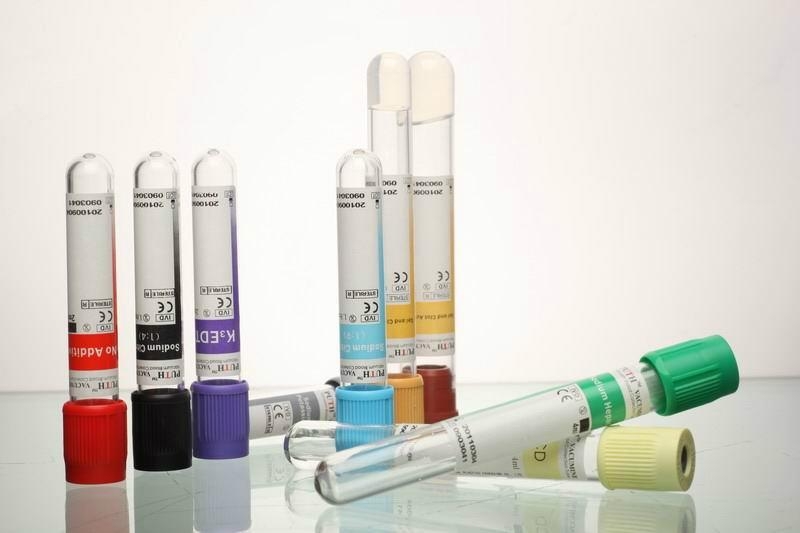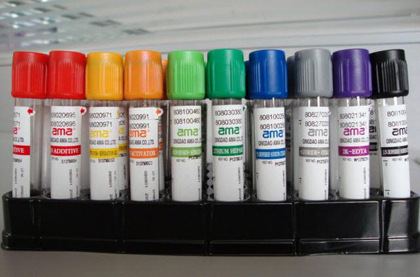Categories
Simplifying the Draws with Blood Collection Tubes

Blood collection tubes are designed for drawing blood for different laboratory tests. They were firstly designed in 1947 by Joseph Kleiner. At that time they were referred to as vacutainers. However, today they are so great in number that if you’re not a professional, the choice of the right one becomes a real problem. Health care professionals are trained to differentiate the tubes by their colors, when it is needed to collect the specimen.
The majority of blood draw tubes have an additive, which prevents the blood from clotting. They also feature a clot activator that produces the serum sample, when the blood is separated by centrifugation. And an anticoagulant produces plasma sample right after the centrifugation.
Many tests require the use of plasma, some require the use of serum, the other ones – anticoagulated whole blood. They all have a vacuum that assists in the process of filling. An evacuated tube has a stopper with a septum punctured by an assembly of a needle during the collection. In most cases the stopper surrounds a plastic safety closure.
How to ensure the accuracy of results? It is highly important that the blood collection tubes that contain anticoagulant are filled to capacity. When the tube is improperly filled, this may result in an abnormal blood ratio, affecting the final results. Before being removed from the collection device, the tube should be filled completely.
What Are the Types of Blood Draw Tubes?

As it has already been mentioned, there are many blood collection tubes, and only a well-trained professional can differentiate between them:
- Red top tube is used for collecting serum in order to test for infectious diseases, antibodies, drugs and in cases of routine blood donor screening.
- Orange or yellow rubber top is a rapid clot activator that is used for serum testing which is required right away.
- White top tube is used in molecular diagnostic testing in order to include branched DNA amplification or polymerase chain reaction (PCR).
- Gold or red rubber top tube is used for serum separation.
- Light yellow top tube is used for human leukocyte antigen (HLA) phenotyping, blood bank studies, paternity and DNA testing.
- Light blue top tube is a reversible anticoagulant.
- Dark blue top tube is used for analyzing if there is trace metal in the blood supply.
- Pink or lavender top tube is used for full blood counts (CBC).
- Grey top tube is used for glucose determinations.
- Tan top tube is used s to test for lead.
- Light green top is used for plasma determination.
- Green top tube is also used in chemistry for plasma determination.
The Order of Draw

FYI, blood collection tubes should be drawn in a certain order. This helps to avoid cross-contamination of additives between the tubes. Here is the recommended order of these plastic tubes:
- Yellow or yellow-black top. This is the first (blood culture) bottle/tube.
- Light blue top. This is the second (coagulation) tube. In case of a routine test a single tube is drawn. However, if there is any concern as to the contamination by thromboplastins or tissue fluids, then a non-additive tube may be drawn first, and then goes the light blue top tube.
- Red-gray/ gold top. This is the third (non-additive) tube.
- Additive tubes. This is the last draw. They go in the following order: SST (it contains a clot activator and a gel separator) – sodium heparin – PST (it contains a gel separator and lithium heparin anticoagulant) – EDTA – ACDB or ACDA (it contains acid citrate dextrose) – fluoride/oxalate.
All these blood collection tubes help to simplify even the most complicated draws.



